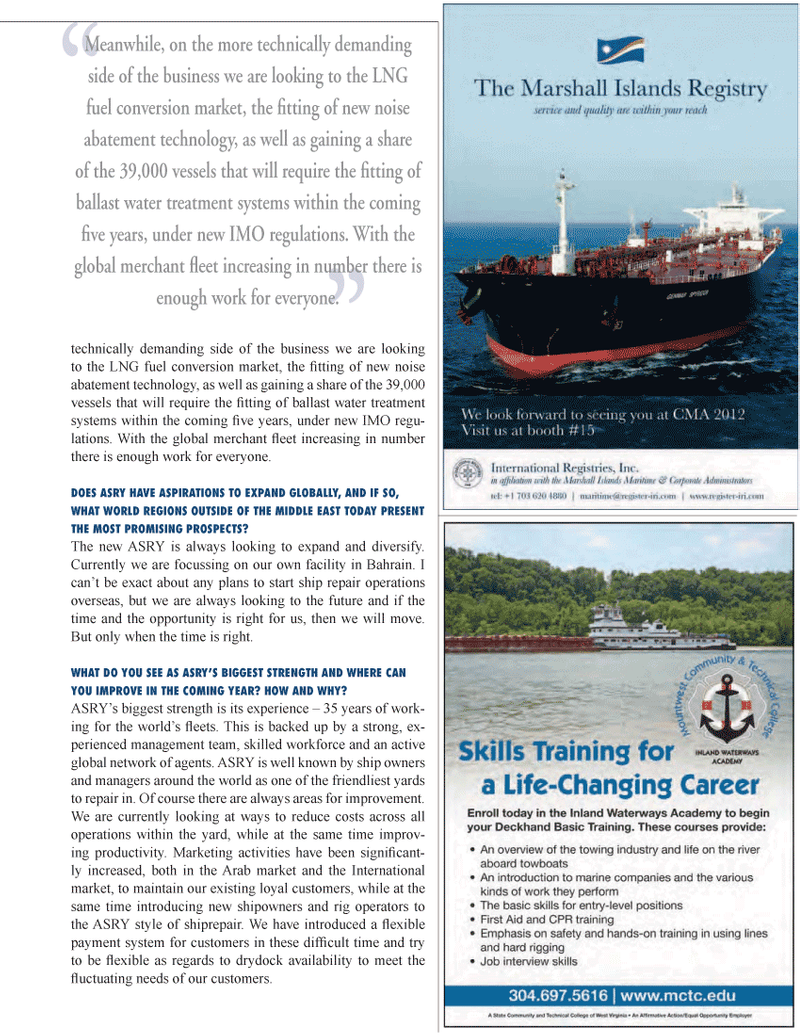
Page 23: of Maritime Logistics Professional Magazine (Q1 2012)
Training & Maritime Security
Read this page in Pdf, Flash or Html5 edition of Q1 2012 Maritime Logistics Professional Magazine
?technically demanding side of the business we are looking to the LNG fuel conversion market, the Þ tting of new noise abatement technology, as well as gaining a share of the 39,000 vessels that will require the Þ tting of ballast water treatment systems within the coming Þ ve years, under new IMO regu- lations. With the global merchant ß eet increasing in number there is enough work for everyone. DOES ASRY HAVE ASPIRATIONS TO EXPAND GLOBALLY, AND IF SO, WHAT WORLD REGIONS OUTSIDE OF THE MIDDLE EAST TODAY PRESENT THE MOST PROMISING PROSPECTS?The new ASRY is always looking to expand and diversify. Currentlywe are focussing on our own facility in Bahrain. I can?t be exact about any plans to start ship repair operations overseas, but we are always looking to the future and if the time and the opportunity is right for us, then we will move. But only when the time is right.WHAT DO YOU SEE AS ASRYS BIGGEST STRENGTH AND WHERE CAN YOU IMPROVE IN THE COMING YEAR? HOW AND WHY? ASRY?s biggest strength is its experience ? 35 years of work- ingfor the world?s ß eets. This is backed up by a strong, ex- perienced management team, skilled workforce and an active global network of agents. ASRY is well known by ship owners and managers around the world as one of the friendliest yards to repair in. Of course there are always areas for improvement. We are currently looking at ways to reduce costs across all operations within the yard, while at the same time improv- ing productivity. Marketing activities have been signi Þ cant- ly increased, both in the Arab market and the International market, to maintain our existing loyal customers, while at the same time introducing new shipowners and rig operators to the ASRY style of shiprepair. We have introduced a ß exible payment system for customers in these dif Þ cult time and try to be ß exible as regards to drydock availability to meet the ß uctuating needs of our customers. Meanwhile, on the more technically demanding side of the business we are looking to the LNG fuel conversion market, the ? tting of new noise abatement technology, as well as gaining a share of the 39,000 vessels that will require the ? tting of ballast water treatment systems within the coming ? ve years, under new IMO regulations. With the global merchant ? eet increasing in number there is enough work for everyone.

 22
22

 24
24
